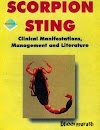The Coronavirus outbreak, which was first detected in China has now affected thousands of people across the globe.The alarming rate of infection resulted in the suspension of regular production which subsequently caused an unprecedented economic catastrophe. The coronavirus has already been a body blow to the Chinese economy and it is speculated that the global economy may tip into a recession.
The problem with current predictions is no one knows how long the virus will remain potent, how authorities around the world are going to stanch new cases and the resources they pull out to treat old ones. What business hates is uncertainty and uncertainty is the only thing that abounds when it comes to predictions about the vitality, endurance, and longevity of the new virus.
According to IMF, the global economy is expected to shrink by over 3 percent in 2020 – the steepest slowdown since the Great Depression of the 1930s. Due to the fall in travel, global industrial activity has been affected.
Oil prices fell further in March as the transportation section, which accounts for 60 percent of the oil demand, was hit due to several countries imposing lockdowns. A deep impact on India’s economy is conspicuous as the country’s industrial output, as measured by the Index of Industrial Production (IIP), contracted by 16.7% in March, according to statistics released by the government on Tuesday.
This is in contrast to a growth rate of 2.7% witnessed during the same month last year. The sharp fall can largely be explained by the nationwide lockdown that was imposed by the Centre in the last week of the month. The manufacturing sector, which witnessed a contraction of about 20%, was the worst hit among the key sectors, perhaps due to disruptions in the labor market caused by the lockdown.
In terms of end-goods, capital goods and consumer durables witnessed a roughly one-third contraction in size as the sale of non-essential goods was obliterated by the unexpected lockdown.
Prioritizing public health through social distancing and population lockdowns comes at a huge economic cost.
Within a short time after the population lockdown was imposed in India, the slowdown in economic activity has resulted in the loss of livelihood among the economically vulnerable Ruling out any impact of stimulus on the price situation, Chief Economic Advisor K.V. Subramanian said the COVID-19 pandemic has severely dented the demand for non-essential or discretionary goods, creating deflationary conditions. Also, a good part of the ₹20 lakh crore stimulus package is designed in a manner that the fiscal deficit remains under control.
The Spanish Flu was far more devastating than the current COVID crisis since it affected one-third of the global population in contrast to one percent now by a coronavirus and despite all that it was a V-shaped recovery then.
The COVID-19 crisis being a temporary external shock can theoretically lead to a quick bounce-back in the economic activity once the lockdown is lifted. But the actual pace of the recovery in industrial production and even the wider economy will depend on the policies adopted by the government.
Author: Rtr Rajlakshmi Chakraborty
Rotaract Club of Meghnad Saha Institute of Technology
RID 3291







1 Comments
Very informative
ReplyDelete